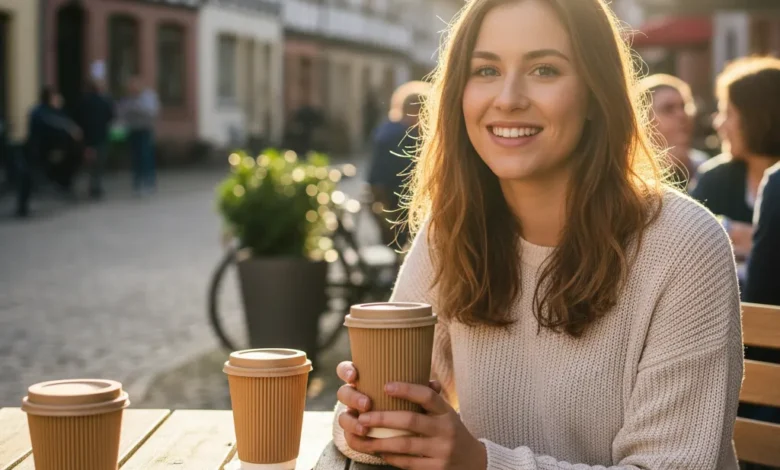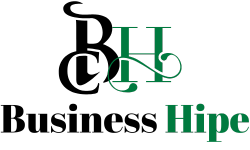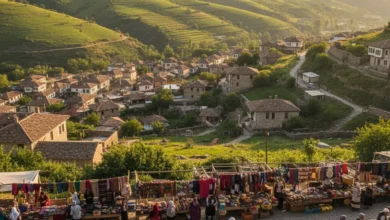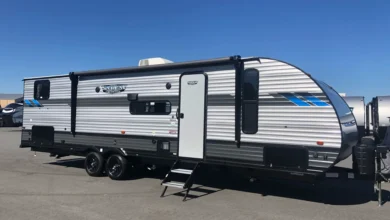How Pappedeckel Became Germany’s Unexpected Icon

In today’s rapid tempo of life, even the simplest things make life easy. One such thing is a pappedeckel- true for computers, since this term sounds absurd to a non-German speaker. Quite practical when an English speaker understands it to refer to a cardboard lid or cover used often for takeaway coffee cups, food containers, or even as beer mats in German culture. Not much in size, and well under the pappedeckel is a nice example of real-day items blending functionality, sustainability, and tradition. This article explains what is, traces its history, shows why it matters in packaging, and explores how it has entered culture and ecology.
What Is Pappedeckel? Understanding the Basics
Pappedeckel combines two German words—”Pappe” (cardboard) and “Deckel” (lid)—to describe paperboard covers designed for sealing containers, cups, jars, and various packaging applications. Unlike conventional plastic closures, these biodegradable alternatives represent a fundamental shift toward circular economy principles and waste reduction strategies.
Manufactured from recycled fibers and renewable resources, pappedeckel serves dual functions: providing practical protection while offering customizable branding surfaces. Their thin profile belies remarkable durability, making them suitable for hot beverages, food storage, cosmetics packaging, and even creative DIY applications.
The Evolution of Cardboard Lids in Sustainable Packaging
The pappedeckel concept originated in Germany during the late 20th century as environmental awareness intensified globally. Initially developed as a plastic alternative for beverage containers, these eco-friendly closures gained rapid adoption across European markets before expanding worldwide.
Today’s pappedeckel represents decades of material science innovation, incorporating water-resistant coatings, enhanced structural integrity, and improved heat tolerance—all while maintaining complete biodegradability and recyclability.
Why Industries Are Switching to Pappedeckel
The global sustainable packaging market is projected to exceed $500 billion by 2030, with paper-based solutions like pappedeckel leading this transformation. Several compelling factors drive this adoption:
Environmental Responsibility: Manufacturing pappedeckel generates significantly lower carbon emissions compared to plastic production. These compostable materials naturally decompose without releasing toxic residues, addressing the urgent plastic pollution crisis affecting oceans and ecosystems worldwide.
Economic Efficiency: Despite superior environmental credentials, pappedeckel remains cost-effective for businesses. Lower production expenses, reduced shipping weights, and streamlined recycling processes create favorable economics across supply chains.
Consumer Preference: Modern consumers actively seek brands demonstrating environmental stewardship. Companies using pappedeckel report enhanced brand perception and customer loyalty, particularly among eco-conscious demographics.
Regulatory Compliance: As governments implement single-use plastic bans and extended producer responsibility legislation, pappedeckel provides compliant alternatives that meet evolving environmental standards including EN 13432 biodegradability certification and FSC responsible forestry requirements.
Material Composition and Manufacturing Excellence
Quality pappedeckel utilizes virgin or recycled cardboard fibers sourced from sustainably managed forests. Advanced manufacturing processes involve precision cutting, forming, and optional coating applications to enhance moisture resistance without compromising biodegradability.
Leading manufacturers now incorporate plant-based barrier layers and water-soluble inks, ensuring complete environmental safety throughout the product lifecycle. FSC-certified and PEFC-certified materials guarantee ethical sourcing practices, supporting responsible forestry management globally.
The production sequence typically involves pulping renewable fibers, forming sheets through controlled pressing, die-cutting to specifications, and applying food-safe coatings when necessary. This streamlined approach minimizes energy consumption while maximizing material efficiency.
Pappedeckel Applications Across Industries
Food and Beverage Sector
Coffee shops, quick-service restaurants, and food delivery platforms have embraced pappedeckel as standard equipment. These lids effectively seal hot beverage cups, prevent spills during transport, and maintain temperature retention comparable to plastic alternatives. Businesses switching to cardboard lids report up to 40% reduction in packaging waste while meeting consumer expectations for sustainable practices.
Beyond beverages, pappedeckel serves as protective covers for soup containers, sauce jars, dessert cups, and ready-meal packaging. Their grease-resistant variants accommodate diverse food applications without sacrificing structural integrity.
Retail and E-Commerce Solutions
Product packaging across fashion, electronics, and consumer goods increasingly incorporates pappedeckel for protective covering and aesthetic appeal. Shoe boxes, clothing containers, and electronics packaging benefit from lightweight yet robust cardboard closures that withstand shipping stresses while projecting premium, eco-friendly brand images.
Creative and Artisanal Uses
The DIY community has discovered pappedeckel’s versatility for handmade jar covers, gift packaging embellishments, decorative coasters, and craft project foundations. Their paintable, printable surfaces invite customization, making them popular among artisans, wedding planners, and creative professionals.
Pappedeckel vs. Plastic Lids: A Comprehensive Comparison
When evaluating packaging materials, several critical factors determine optimal selection:
Environmental Impact: Plastic lids persist in landfills for centuries, fragmenting into microplastics that contaminate food chains and water systems. Pappedeckel naturally biodegrades within months under composting conditions and integrates seamlessly into paper recycling streams, supporting circular economy models.
Performance Characteristics: While plastic offers superior water resistance, recent innovations in biodegradable coatings enable pappedeckel to match plastic performance in most applications. Heat tolerance, structural strength, and seal integrity now rival conventional materials without environmental penalties.
Cost Considerations: Production expenses for pappedeckel remain competitive with plastic manufacturing, particularly when considering disposal costs and potential regulatory penalties associated with non-recyclable materials.
Brand Perception: Consumer research consistently demonstrates preference for businesses using sustainable packaging. Pappedeckel communicates environmental commitment directly to customers, strengthening brand differentiation in competitive markets.
Customization and Branding Opportunities
Modern pappedeckel transcends basic functionality, serving as powerful marketing tools. Digital printing technologies enable full-color graphics, company logos, promotional messages, and even QR codes linking to digital content or sustainability information.
This customization capability transforms every package into a brand touchpoint, reinforcing corporate identity while demonstrating environmental values. Limited-edition designs, seasonal graphics, and co-branding opportunities expand creative possibilities beyond conventional packaging constraints.
Environmental Benefits and Recycling Infrastructure
Adopting pappedeckel generates measurable environmental improvements across multiple dimensions:
Resource Conservation: Paper-based materials require less petroleum-derived inputs and utilize renewable forestry resources managed through sustainable harvesting practices.
Waste Reduction: Complete biodegradability ensures pappedeckel doesn’t accumulate in landfills or natural environments. When composted, these materials return nutrients to soil systems, closing biological loops.
Energy Efficiency: Recycling cardboard consumes significantly less energy than plastic reprocessing, reducing carbon footprints across product lifecycles.
Ecosystem Protection: Eliminating plastic packaging prevents wildlife harm, marine pollution, and microplastic contamination that threatens biodiversity globally.
Addressing Moisture Challenges Through Innovation
The primary limitation of conventional pappedeckel involves moisture sensitivity, particularly for hot liquids or humid storage conditions. However, cutting-edge solutions are rapidly overcoming these challenges:
Plant-Based Coatings: Derived from natural waxes, starches, and bio-polymers, these treatments provide water resistance while maintaining complete biodegradability.
Structural Engineering: Advanced fiber alignment and density optimization enhance inherent moisture resistance without additional coatings.
Hybrid Solutions: Multilayer designs incorporating different paper grades balance performance requirements with environmental credentials.
These innovations position pappedeckel for expanded applications previously dominated by plastic materials, including refrigerated products and extended-shelf-life packaging.
Leading Manufacturers and Quality Certification
Reputable pappedeckel suppliers include BioPak, Vegware, and Huhtamaki, each offering FSC-certified materials and comprehensive sustainability credentials. When sourcing cardboard lids, prioritize suppliers providing:
- Third-party environmental certifications (FSC, PEFC, EN 13432)
- Transparent supply chain documentation
- Performance testing data for specific applications
- Customization capabilities matching brand requirements
- Competitive pricing with volume discounts
Quality assurance should verify food-safe materials, consistent dimensions, and reliable performance under intended use conditions.
Future Trends Shaping Pappedeckel Development
The evolution of sustainable packaging continues accelerating, with several emerging trends poised to enhance pappedeckel functionality:
Smart Packaging Integration: Embedded sensors monitoring freshness, temperature-sensitive inks indicating product quality, and NFC chips enabling consumer engagement represent next-generation possibilities.
Enhanced Barrier Properties: Ongoing research into bio-based coatings promises improved performance against oils, moisture, and oxygen while maintaining environmental benefits.
Design Innovation: Aesthetic trends favor minimalist designs with natural textures, complementing broader movements toward authentic, eco-conscious branding.
Regulatory Momentum: Expanding plastic bans and extended producer responsibility programs will accelerate pappedeckel adoption across markets worldwide.
Implementing Pappedeckel in Your Business
Transitioning to cardboard lids requires strategic planning across several dimensions:
Application Assessment: Evaluate specific performance requirements including moisture exposure, temperature ranges, and handling conditions to select appropriate pappedeckel specifications.
Supplier Selection: Compare offerings from certified manufacturers, requesting samples for testing before committing to large orders.
Customer Communication: Leverage sustainability messaging in marketing materials, highlighting environmental benefits to strengthen brand positioning.
Cost Analysis: Calculate total lifecycle costs including production, shipping, disposal, and potential regulatory compliance savings compared to plastic alternatives.
Gradual Implementation: Pilot programs enable refinement before full-scale deployment, minimizing disruption while gathering customer feedback.
Cultural Significance and Global Adoption
Pappedeckel adoption varies across cultures, reflecting local environmental priorities and regulatory frameworks. German markets pioneered widespread use for preserves and artisanal products, while Asian markets increasingly apply cardboard lids to tea, spice, and specialty food packaging.
This cultural diversity demonstrates pappedeckel’s universal adaptability, accommodating regional preferences while advancing global sustainability objectives.
Embracing Sustainable Packaging Leadership
Pappedeckel represents far more than simple cardboard lids—these innovative closures symbolize the packaging industry’s evolution toward environmental responsibility, economic efficiency, and consumer-centric design. As plastic regulations tighten and sustainability expectations intensify, businesses adopting pappedeckel position themselves as forward-thinking leaders committed to planetary health.
Whether operating coffee shops, e-commerce platforms, or artisanal product lines, integrating pappedeckel delivers measurable benefits across environmental impact, cost management, and brand differentiation. The future of packaging is undeniably green, and pappedeckel is leading this essential transformation one lid at a time.
Conclusion
Though often dismissed, the pappedeckel is one great example of how little innovations can bring great changes. It offers convenience, environmental sustainability, and even a bit of culture to coffee shops and German beer halls. In our journey towards a more sustainable tomorrow, the pappedeckel will always be a part of our daily lives. Next time you sip that takeaway coffee or set down a cold beer, think of how this mere cardboard plays a big role in making life easier, greener, and more fun.
If cultural traditions and everyday experiences interest you, you might also enjoy our recent feature on Veneajelu, where we explore the meaning of boat rides and their place in travel culture.
FAQs
1. What does the term actually mean?
It refers to a simple cardboard lid or cover, often used on cups, food containers, or even as coasters in bars.
2. Why is it considered environmentally friendly?
Since it’s made from cardboard, it can usually be recycled or composted, unlike plastic options that linger for years.
3. Where do people most often see it in daily life?
You’ll find it in coffee shops for takeaway drinks, in food delivery packaging, and on pub tables as drink coasters.
4. Can businesses personalize these items?
Yes, many cafés, breweries, and restaurants print their logos, messages, or seasonal designs on them for branding.
5. Are cardboard lids durable enough for hot drinks?
Modern designs are sturdy, heat-resistant, and safe, making them a reliable choice for both hot and cold beverages.





